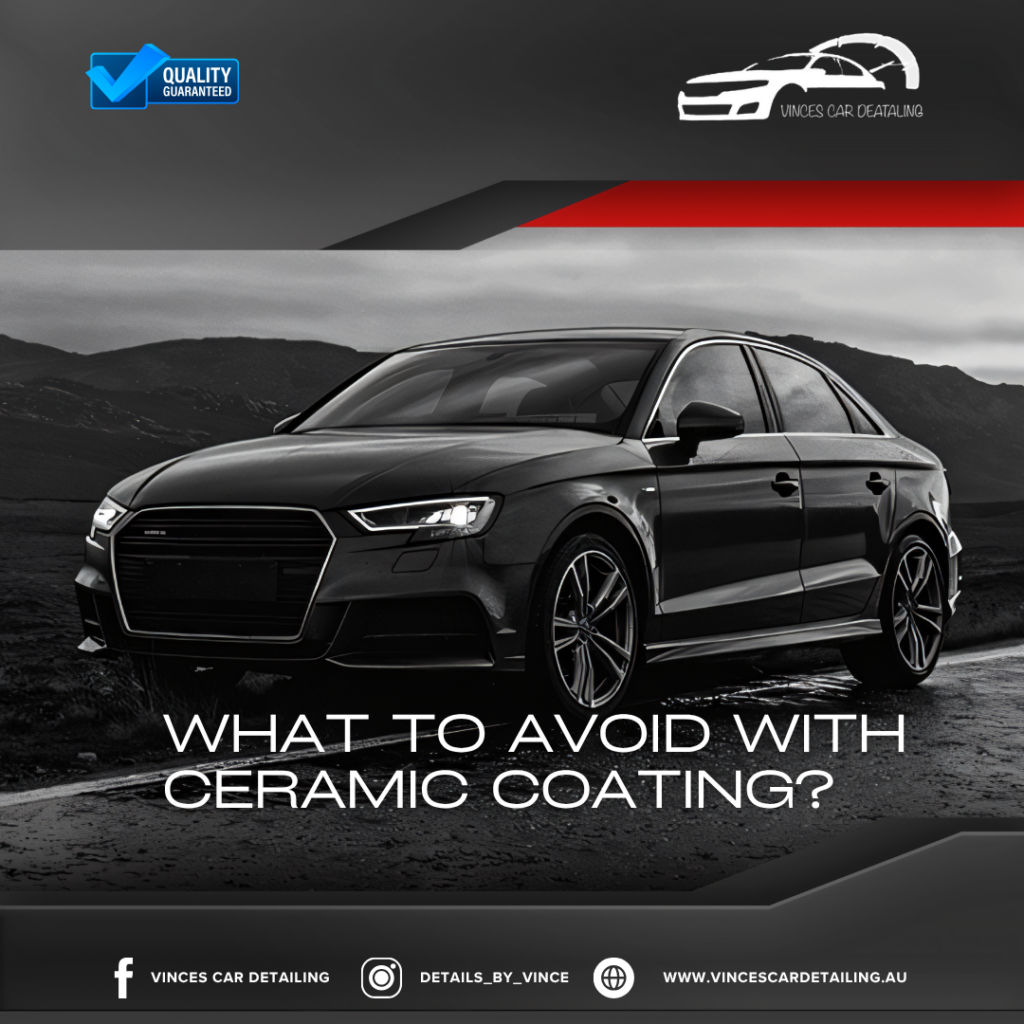
Introduction to Ceramic Coating
When you first get your car coated with ceramic, it feels like you’ve given it an extra layer of protection from the elements. Ceramic coatings offer a protective shield that repels water, dirt, and even some light scratches. However, while the benefits are clear, many car owners make ceramic coating mistakes during the application and maintenance process that can drastically reduce the effectiveness of the coating.
In this guide, we’ll walk through the common mistakes people make when applying ceramic coating and how to avoid them. This will ensure that your ceramic coating lasts as long as possible, keeping your vehicle looking shiny and protected.
What is Ceramic Coating?
Before diving into what to avoid, let’s quickly define what ceramic coating actually is. Ceramic coating is a liquid polymer applied to the exterior surfaces of your car. It chemically bonds with the vehicle’s paint to create a durable, hydrophobic layer. This layer repels water, making it easier to clean your car, and it provides protection against contaminants like dirt, bird droppings, and tree sap.
While ceramic coatings offer long-term benefits, if not applied or maintained correctly, they can lose their effectiveness or even damage the surface of your car. With that in mind, let’s explore the mistakes you should avoid to make sure you’re getting the most out of your investment.
Common Ceramic Coating Mistakes to Avoid
Skipping Surface Preparation
One of the biggest mistakes people make is skipping proper surface preparation before applying ceramic coating. The surface of your car must be clean and free of contaminants for the coating to bond properly. If there’s dirt, grease, or old wax on the surface, the coating won’t adhere properly, which means it will wear off much sooner.
Before applying, make sure you wash your car thoroughly, decontaminate it with a clay bar, and use an alcohol-based solution to remove any remaining oils or residues. Neglecting this step might save you some time, but it will cost you in the long run.
Not Using the Right Tools
It might seem like ceramic coating is something anyone can apply, but the tools you use are crucial to the success of the application. For example, many people attempt to use a cheap microfiber cloth or sponge when applying the coating, which can leave behind streaks or even damage the paint.
Investing in quality applicators and microfiber towels is a small price to pay for achieving a flawless finish. Additionally, using a dedicated polishing pad for buffing the coating will ensure a smoother and more even layer.
Applying in Poor Weather Conditions
Timing is everything when it comes to applying ceramic coating. If you try to apply it during poor weather conditions, such as high humidity or extreme temperatures, you might end up with an uneven or streaky finish. The ideal conditions for application are usually between 15°C to 25°C, with low humidity.
Applying the coating in these conditions ensures that it cures properly and bonds to the surface. If the temperature is too hot or too cold, the coating might dry too quickly or too slowly, leading to imperfections. So, plan the application for a mild day to achieve the best results.
Ignoring Aftercare
Many car owners think that once the ceramic coating is applied, they don’t need to do anything else. Unfortunately, this isn’t true. Proper aftercare is crucial to maintaining the effectiveness of the coating. You’ll need to follow a specific maintenance routine, including gentle washing techniques and avoiding harsh chemicals.
Make sure you don’t wash your car with any abrasive sponges or use any strong cleaning products that could degrade the coating over time. The coating will only last as long as the care you put into it.
Long-Term Care Mistakes
Neglecting Regular Washing
Even though ceramic coatings make it easier to clean your car, it’s still important to wash your vehicle regularly. Over time, contaminants such as road salts, bird droppings, and tree sap can build up on the surface. While ceramic coating repels water, it doesn’t make your car invincible.
It’s essential to wash your car every two to four weeks, depending on how much exposure to the elements it receives. Regular washing not only maintains the aesthetic appeal but also prevents harmful contaminants from sitting on the coating for extended periods.
Using Harsh Chemicals
You may be tempted to use heavy-duty cleaning products to maintain your car’s appearance, but some of these can strip away the ceramic coating. Harsh chemicals, including acidic cleaners or strong degreasers, can break down the protective layer and make the coating less effective.
Always opt for car-safe, pH-balanced soaps and avoid using abrasive products that could scratch the surface. Look for products that are specifically designed to work with ceramic coatings to avoid unnecessary damage.
Final Thoughts
In conclusion, ceramic coatings provide excellent protection for your vehicle, but they require careful attention and proper maintenance. To make sure your investment lasts, avoid the common mistakes we’ve outlined above. Whether it’s skipping surface prep, applying in the wrong conditions, or neglecting aftercare, the right steps can help preserve the integrity of the coating and keep your car looking brand new for years.
FAQs
What happens if I don’t prep my car properly before applying ceramic coating?
If you don’t clean your car thoroughly before applying ceramic coating, contaminants like dirt, oil, or wax will prevent the coating from bonding properly. This can lead to an uneven application and premature wear, leaving your car unprotected.
Can I use any type of soap to clean my car after applying ceramic coating?
No, you should use a pH-balanced car soap to clean your car. Avoid harsh chemicals and cleaners that could degrade the ceramic coating. Using the wrong soap can strip the protective layer and shorten its lifespan.
How often should I maintain ceramic coating on my car?
You should wash your car every two to four weeks to maintain the ceramic coating. Regular maintenance helps prevent contaminants from damaging the coating, keeping your car looking shiny and protected.
Does ceramic coating protect against scratches?
While ceramic coatings provide a level of protection against minor scratches and swirl marks, they do not make your car scratch-proof. It’s important to maintain proper care and avoid abrasive materials that can damage the surface.
How long does ceramic coating last?
The lifespan of ceramic coating depends on the product and how well you maintain it. On average, a ceramic coating can last anywhere from 1 to 5 years, depending on factors like maintenance, environmental exposure, and quality of the coating applied.
